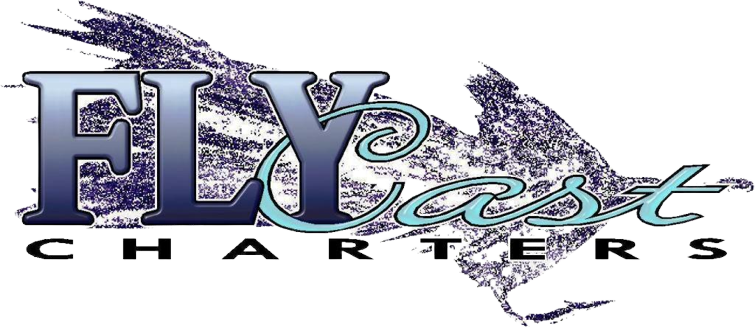Everything You Need to Start
Saltwater fly fishing is a challenging and rewarding sport that can be enjoyed by anglers of all experience levels. When I speak to people new to saltwater fly fishing, the first question I get is,” What do I need to get started saltwater fly fishing?” So, before you can start casting your flies, you’ll need to gather some essential gear.
In this musing, I’ll take a look at the most important pieces of gear you’ll need for saltwater fly fishing. We'll also provide some tips on how to choose the right gear for your needs. So let’s get started!
1. Fly Rod
The fly rod is the heart of your saltwater fly fishing setup. It’s responsible for casting your flies and fighting the fish, so it’s important to choose the right one.
For saltwater fly fishing, you’ll need a rod that’s powerful enough to handle the larger fish you’ll be targeting. Typically, a 7- to 10-weight rod is a good starting point. My personal favorite is a moderately fast to fact action 9 weight rod. This rod is light enough for smaller fish, but heavy enough for larger permit and Jacks. It is a good place to start.
Most 9 weight rods will be made with saltwater components. Saltwater can be harsh on gear, so you want to make sure your rod can withstand the elements. And always hose it off after using it in saltwater
2. Fly Reel
The fly reel is responsible for storing your fly line and providing drag when you’re fighting a fish. Mountain trout fishers typically say the reel is just for storing the line. That may be true for 9-inch trout, but it isn’t true for 9 pound redfish.
For saltwater fly fishing, you’ll need a reel that’s strong enough to handle the large fish you'll be targeting. A reel with a sealed disc drag system is a essential. You’ll also want to choose a reel that’s made from corrosion-resistant materials. Like your rod, you want to make sure your reel can withstand the elements.
3. Fly Line and backing
The fly line is what connects your fly rod to your fly. It’s important to choose a fly line that’s designed for saltwater fishing. Some saltwater fly lines are designed for tropical conditions and some for cool to cold water conditions. Be sure to choose the one that matches your conditions. For use on fast action rods, many lines are ½ to 1 line weight heavier than AFTMA standards. This helps better load the rod and cast better in windy conditions. Proper fly line selection is critical. Try casting a few different lines on your rod to help you choose the one that feels best to you.
Typically, the fly shop will load your reel with 20 lb backing before installing the line. Backing provides a larger diameter for your line so it won’t come off the reel in tight coils. It also provides up to 200 yards of extra line you will need when that 10 pound bonefish takes your fly and races away with it!
4. Leader and Tippet
The leader and tippet are the final links in your fly-fishing setup. They connect your fly line to your fly and help to prevent your fly from getting tangled. For saltwater fly fishing, you’ll need a leader and tippet that are made from strong, abrasion-resistant materials. Fluorocarbon is a good choice for both leader and tippet material in clear water conditions. If you fish in murkier waters like Georgia or the Everglades, you can get by with regular, and less expensive, mono tapered leader and tippet. Or learn to tie your own. See how to tie your “ Keep it Simple for Salt” paragraph, on my Tips and Techniques page.
5. Flies
The flies you use will depend on the species of fish you’re targeting. However, there are a few basic flies that every saltwater fly fisherman should have in their fly box. I have listed several flies I use on my Redfish Flies page. These will give you an idea what you need to look for when purchasing flies at your local fly shop.
Some popular saltwater flies include:
Clouser Minnow
Shrimp imitations
Crab patterns
Flashy flies.
Deceiver
6. Waders
Only if you are fishing in cold water conditions will you need waders. Breathable waders are recommended along with wader boots to match. Be sure to get boots large enough to accommodate your foot size, heavy socks and the wader booties.
7. Boots
If you wade fish in flooded grass for redfish or on sand flats for bonefish and permit, flats booties are essential. Their primary purpose is to protect your feet from sharp objects. For saltwater fly fishing, you’ll need a pair of boots that are made from durable materials. They should also be comfortable to wear for long periods of time. There are many good brands on the market.
8. Other Saltwater Fly Fishing Gear
In addition to the basic gear listed above, there are a few other items you may want to consider for saltwater fly fishing.
These include:
Tippet material
Knife
Sun hat
Sunglasses-Good polarized ones. This is a very important piece
of gear. Costa, Smith and many other brands are good
alternatives.
Conclusion
This is just a basic overview of the gear you'll need for saltwater fly fishing. There are many other factors to consider when choosing gear, such as where and what you will be fishing for, your budget and personal preferences. However, the gear listed above will give you a good starting point for your saltwater fly fishing adventures.
So get out there and start fishing!

